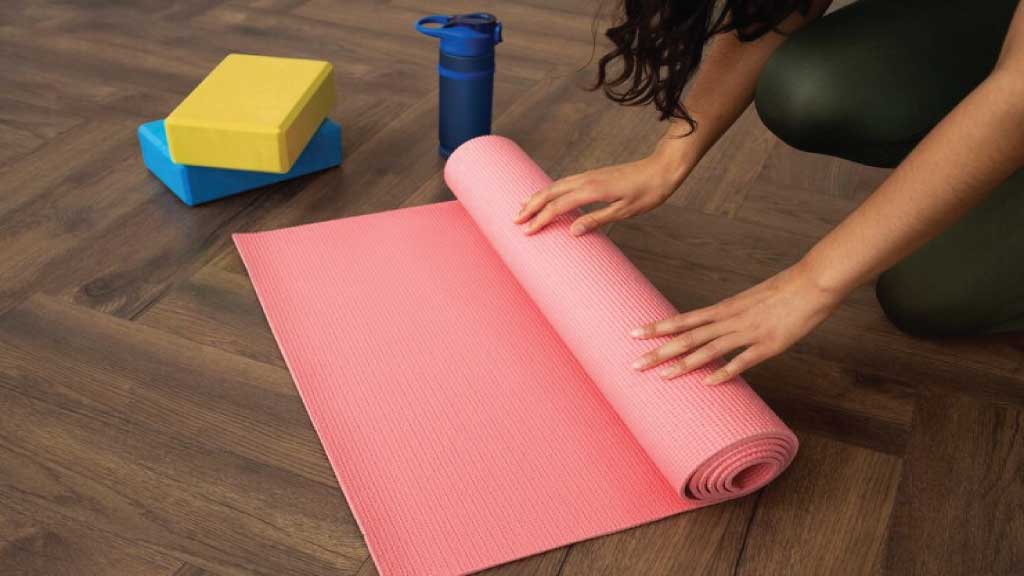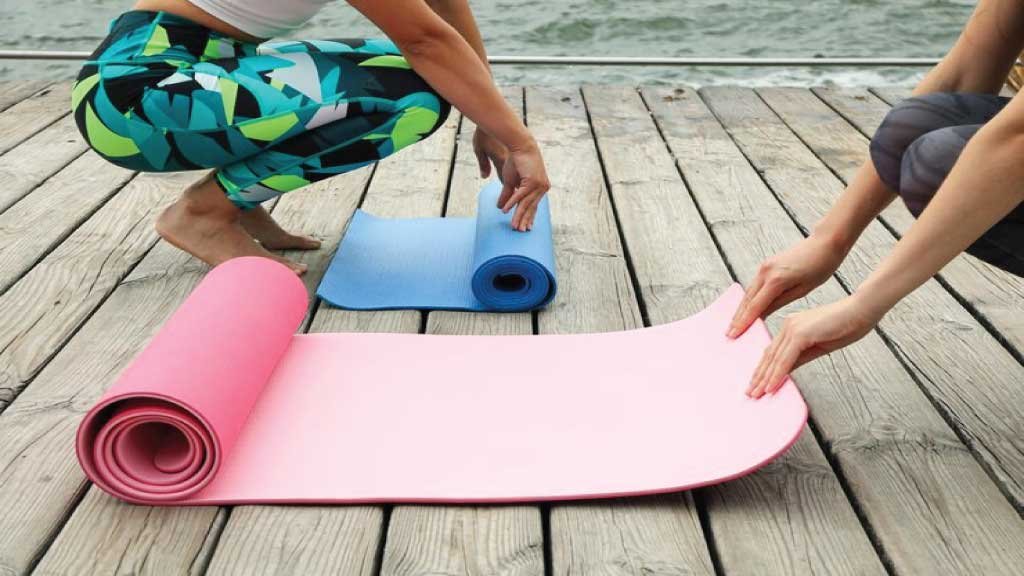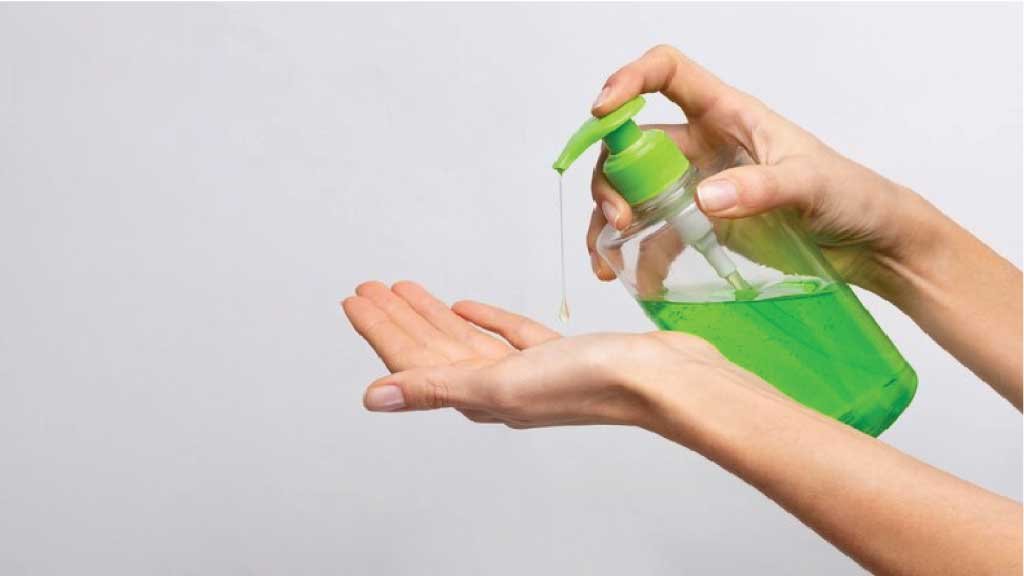Maintaining a clean yoga mat is essential for a hygienic and enjoyable yoga practice. Over time, sweat, oils, and dirt can accumulate on the surface of your mat, creating an environment ripe for bacteria growth and compromising its grip and durability. Fortunately, there are several easy and effective ways to clean your yoga mat, ensuring it stays fresh and ready for your next session. From gentle soap and water solutions to natural disinfectants like vinegar and essential oils, you can choose a cleaning method that suits your preferences and materials of your mat.
Additionally, commercial yoga mat cleaners offer convenient solutions specifically formulated for this purpose. For certain mats, machine washing may also be an option, although it’s important to follow manufacturer instructions to avoid damaging your mat. By incorporating regular cleaning into your yoga routine, you’ll not only maintain a clean and germ free surface but also prolong the life of your beloved yoga mat.
Table of Contents
ToggleHow to Clean Your Yoga Mat
Warm Water and Mild Soap:
Maintaining the cleanliness of your yoga mat is essential for both hygiene and longevity. To thoroughly clean your mat using warm water and mild soap, begin by filling a basin or bathtub with warm water. Add a few drops of gentle soap or detergent to create a cleansing solution. Submerge your yoga mat into the water and allow it to soak for a few minutes to loosen any dirt or grime.
Using a soft cloth or sponge, gently scrub the surface of the mat to remove any stubborn stains or residue. Pay special attention to areas that come into direct contact with your body during practice. Once you’ve cleaned the entire surface, rinse the mat thoroughly with clean water to remove any remaining soap.
After rinsing, hang your yoga mat in a well ventilated area to air dry completely. Avoid exposing it to direct sunlight, as this can cause the mat to deteriorate over time. Once dry, roll up your mat and store it in a clean, dry place until your next practice session. By regularly cleaning and caring for your yoga mat, you can ensure a hygienic and comfortable experience every time you practice.
Vinegar Solution:
Cleaning your yoga mat with a vinegar solution offers an effective way to disinfect and deodorize it, leaving it fresh and ready for your next practice. To create the cleaning solution, mix equal parts water and white vinegar in a spray bottle. Once the solution is prepared, spritz it generously over the entire surface of your yoga mat, ensuring even coverage.
Allow the vinegar solution to sit on the mat for a few minutes to effectively kill any germs or bacteria lingering on the surface. Vinegar is known for its natural disinfectant properties, making it an excellent choice for cleaning yoga mats. Additionally, the acidic nature of vinegar helps to neutralize odors, leaving your mat smelling clean and fresh.
After letting the solution sit, wipe down the mat thoroughly with a damp cloth or sponge to remove any dirt, grime, or excess vinegar. Be sure to pay extra attention to any areas that may be particularly soiled or heavily used during your yoga practice.
Once you have wiped down the mat, allow it to air dry completely before rolling it up or using it again. Hanging the mat in a well ventilated area will help expedite the drying process. With regular cleaning using a vinegar solution, you can maintain a clean, hygienic yoga mat that enhances your practice experience.
Essential Oils Spray:
Cleaning your yoga mat with an essential oils spray not only effectively cleanses the surface but also infuses it with the natural aromas and benefits of essential oils. To create this refreshing cleaning solution, start by filling a spray bottle with water. Add a few drops of your preferred essential oils, such as tea tree oil known for its antibacterial properties, or lavender oil for its calming scent.
Once the essential oils are added, shake the spray bottle well to ensure the mixture is thoroughly combined. Then, generously spritz the solution onto your yoga mat, covering the entire surface evenly. The essential oils will not only help to cleanse the mat but also leave behind a delightful scent that enhances your yoga practice experience.
Allow the solution to sit on the mat for a few minutes to effectively penetrate and cleanse the surface. Then, using a clean cloth or towel, gently wipe down the mat to remove any dirt, sweat, or residue.
After wiping down the mat, allow it to air dry completely before rolling it up for storage or use. The natural properties of essential oils will leave your mat smelling fresh and clean, creating a rejuvenating atmosphere for your next yoga session. Incorporating essential oils into your yoga mat cleaning routine adds an extra element of relaxation and refreshment to your practice.
Commercial Yoga Mat Cleaner:
Utilizing a commercial yoga mat cleaner offers a convenient and efficient way to keep your mat fresh and sanitized. These specialized cleaners are designed specifically for yoga mats, effectively removing sweat, dirt, and bacteria while preserving the integrity of the material. To begin, you can purchase a commercial yoga mat cleaner from a local store or online retailer, ensuring you select one that aligns with your preferences and needs.
Once you have your chosen cleaner, carefully follow the instructions provided on the label. Typically, you will start by spraying the cleaner evenly onto the surface of your yoga mat, ensuring complete coverage. Allow the cleaner to sit for the specified amount of time, as indicated on the label, to effectively penetrate and cleanse the mat.
After the designated time has passed, use a clean cloth or towel to wipe away the cleaner along with any dirt or residue that has accumulated on the mat’s surface. Ensure thorough wiping to leave the mat clean and refreshed.
Once you’ve cleaned the mat, it’s essential to allow it to air dry completely before storing or using it again. This step helps prevent the growth of mold or mildew and ensures the mat remains in optimal condition for future use. With regular use of a commercial yoga mat cleaner, you can maintain a hygienic and inviting practice space, enhancing your overall yoga experience.
Machine Washing (for certain mats):
For those yoga mats that are machine washable, following the proper cleaning instructions ensures they remain clean and well maintained. Start by checking the manufacturer’s instructions to confirm whether your yoga mat can be safely washed in a washing machine. It’s crucial to adhere to these guidelines to prevent damaging the mat’s material or compromising its performance.
Once you’ve determined that your mat is suitable for machine washing, place it in the washing machine along with a mild detergent. Opt for a gentle cycle to avoid subjecting the mat to excessive agitation, which could potentially cause damage. Additionally, use cold or lukewarm water rather than hot water to prevent shrinking or warping of the mat’s material.
During the wash cycle, ensure the mat is adequately submerged and allow the detergent to thoroughly penetrate and cleanse the surface. Avoid using harsh detergents or bleach, as they may degrade the mat’s material and diminish its lifespan.
After washing, remove the yoga mat from the machine and carefully inspect it for any remaining soap residue or debris. Rinse the mat thoroughly with clean water if necessary before proceeding to the drying step.
To dry the mat, hang it up in a well ventilated area or lay it flat on a clean surface. Ensure the mat is completely dry before rolling it up for storage or use, as any residual moisture could lead to the growth of mold or mildew.
By properly machine washing your yoga mat according to the manufacturer’s instructions, you can effectively remove dirt, sweat, and bacteria, ensuring a clean and hygienic surface for your yoga practice.
Conclusion:
In conclusion, maintaining a clean and hygienic yoga mat is essential for a comfortable and enjoyable practice. Whether you opt for warm water and mild soap, a vinegar solution, essential oils spray, commercial yoga mat cleaner, or machine washing, each cleaning method offers its unique benefits for removing dirt, sweat, and bacteria from your mat’s surface.
By incorporating regular cleaning into your yoga routine, you can prolong the lifespan of your mat and create a more sanitary environment for your practice. Remember to follow the manufacturer’s instructions and consider the specific needs of your mat to ensure proper care and maintenance. With a clean and fresh yoga mat, you can fully immerse yourself in your practice, feeling confident and supported as you move through your poses. So, prioritize the cleanliness of your yoga mat to enhance the quality of your practice and promote overall well being.
FAQs:
How often should I clean my yoga mat?
It’s recommended to clean your yoga mat after every few uses, especially if you practice hot yoga or vigorous styles that cause increased sweating. Regular cleaning helps prevent the buildup of bacteria and odors, ensuring a hygienic practice surface.
Can I use household cleaners like bleach to clean my yoga mat?
It’s not advisable to use harsh chemicals like bleach or household cleaners on your yoga mat, as they can damage the material and strip away its natural properties. Instead, opt for gentle cleaning solutions specifically designed for yoga mats or natural alternatives like vinegar or essential oils.
Can I machine wash any yoga mat?
Not all yoga mats are suitable for machine washing, so it’s essential to check the manufacturer’s instructions before attempting to clean your mat in the washing machine. Mats made from certain materials or with special coatings may require alternative cleaning methods to avoid damage.
How do I dry my yoga mat after cleaning?
After cleaning, it’s important to allow your yoga mat to air dry completely before rolling it up or using it again. Hang the mat in a well ventilated area or lay it flat on a clean surface, avoiding direct sunlight, which can cause the mat to deteriorate over time.
Can I use my yoga mat immediately after cleaning?
While it’s tempting to use your yoga mat right after cleaning, it’s best to wait until it’s completely dry to prevent slipping and ensure optimal hygiene. Depending on the cleaning method and environmental conditions, drying times may vary, so exercise patience before resuming your practice.
All Images ‘Designed by Freepik‘



